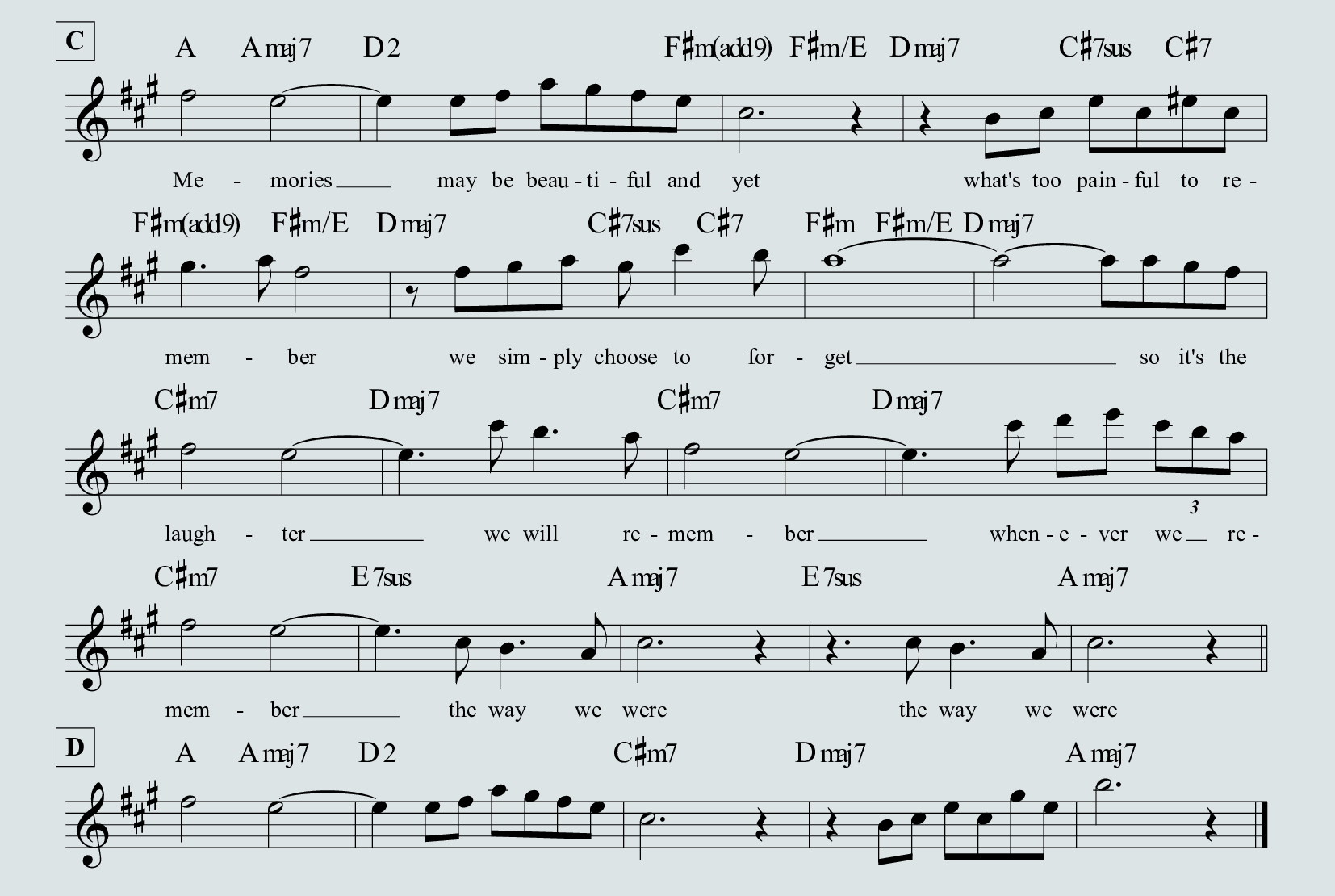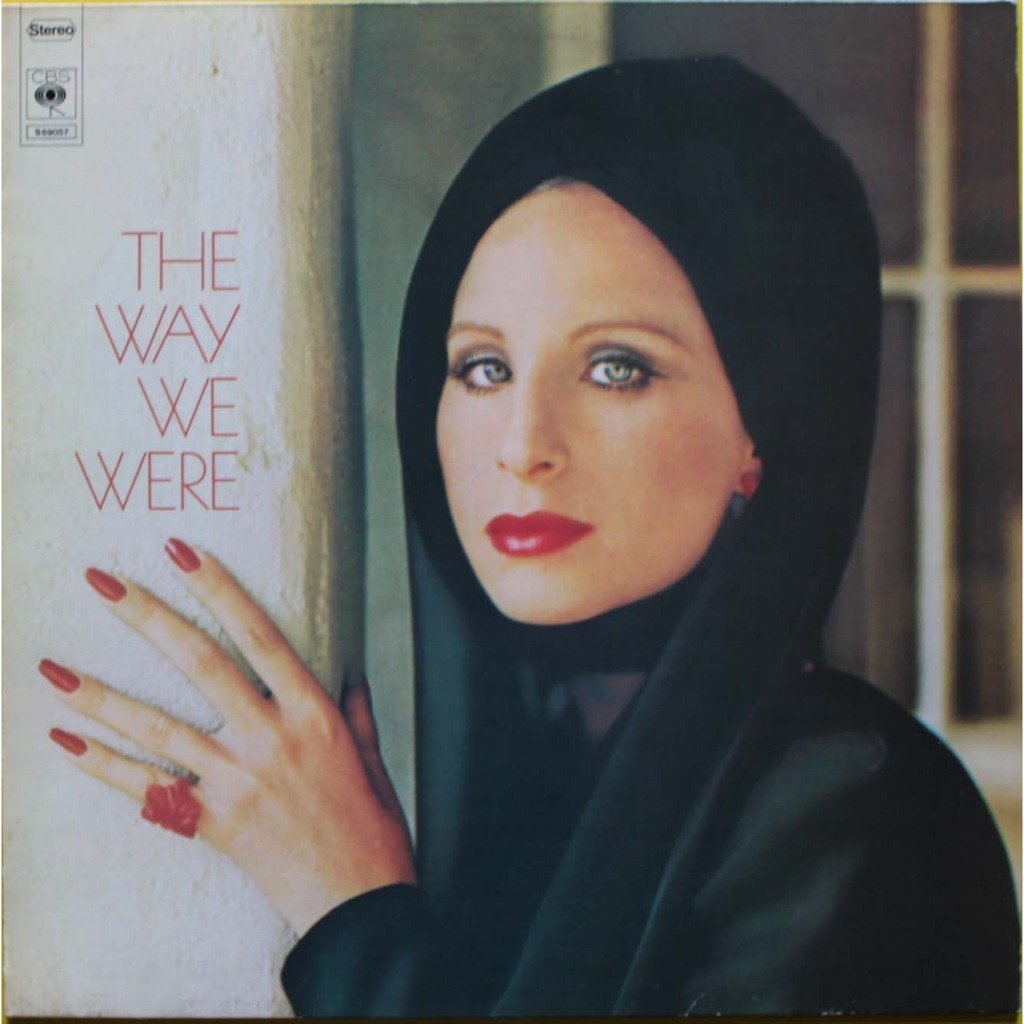[Monday’s Notes No. 139] The Way We Were could be an ordinary song, instead it becomes something special thanks to a series of refinements in the way it was composed, arranged and sung. Barbra Streisand’s performance is also particularly poignant because the singer starred in the film for which the song was written.
The Way We Were is a classic pop song. As is often the case, the song originates from a rather simple melodic idea. The main motif is a descending melodic fragment, which starts at 6th F#, leans to 5th E, jumps to 8th A and then goes down the scale again to 5th and then to 3rd C.

This melodic idea is answered by a second, rather similar one.

These two lines would have been enough to write a good song, but not to make a great one. The first finesse of composers Alan Bergman and Marilyn Bergman lies in the passage measure, the one that connects the two melodic ideas. Here the piece briefly touches E#, a note outside the scale. Here are the first eight measures of the piece, with the conjunction measure highlighted.

It is precisely this passage, born as a conjunction between two ideas, that makes the song more interesting, turning a fairly common melody into something interesting.
From a harmonic point of view, the piece is very simple, all the chords are part of the underlying major scale. For more on this subject see the lesson on the harmonization of the major scale.
The only unrelated chord is C#7, which leads to the modulation to the relative minor key. Here is the second subtlety: although the chords are extremely common, the composer makes them more effective with small additions: appoggiaturas on the 2nd, 9th, 4th (sus chords), or the passage on the major seventh in part [B].
The second section of The Way We Were is mainly used to increase the rhythm of the melody. While in part [A] long notes prevail, in part [B] we find eighths, sixteenths and a triplet. Here is the score.

In part [A] the melody prevails, in part [B] the rhythm. Analysing these details helps us to understand the skilled work of a composer behind a successful song. The piece continues with a section [C] and a coda [D], both of which are still derived from the main idea [A].

Contributing to the success of this piece is a truly superlative Barbra Streisand. Marvin Hamlisch tailored this splendid arrangement for her, in fact the singer is never silent, there are no instrumental parts to replace the vocals. Here is the structure of The Way We Were.
- Introduction [A] vocalised without words
- [A] [B] [C] sung with words
- Coda [D] vocalised without words
Barbra Streisand does it all, the singer never stops! It is also to her credit that The Way We Were, a song that could perhaps have been ordinary, has instead become an authentic masterpiece.
Until next Monday!
Download the lead sheet of The Way We Where


